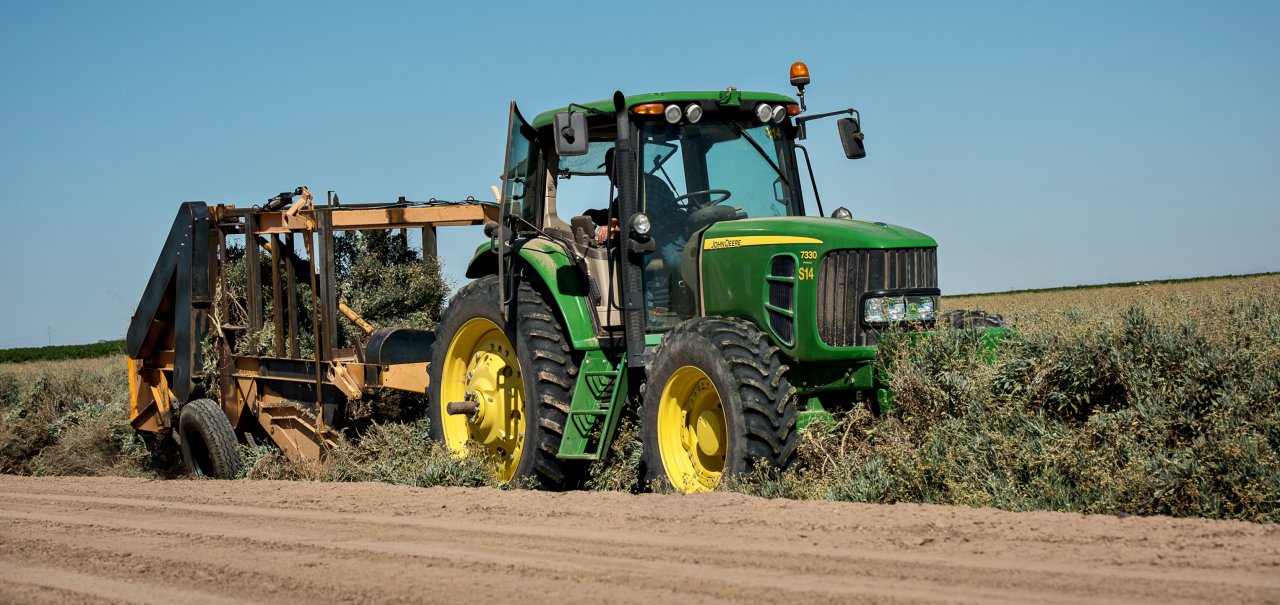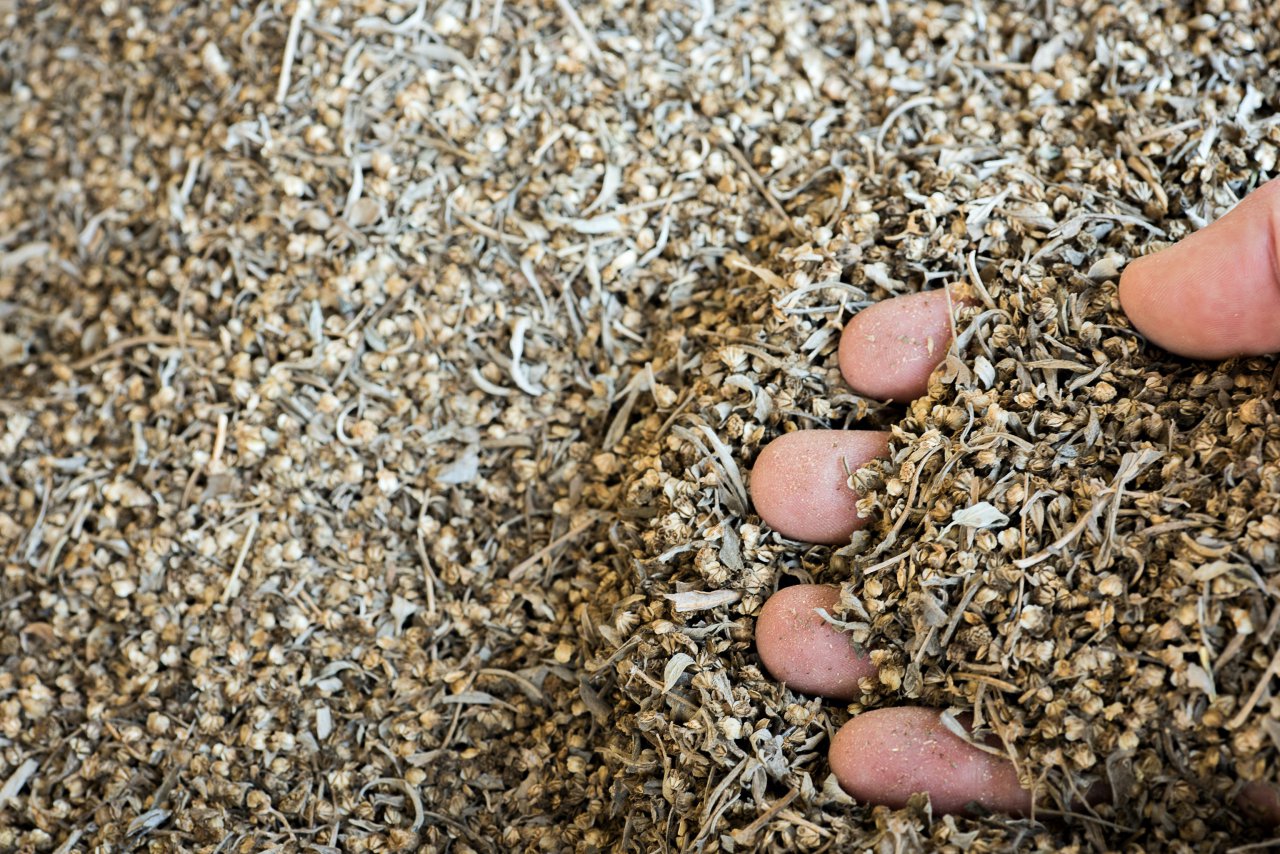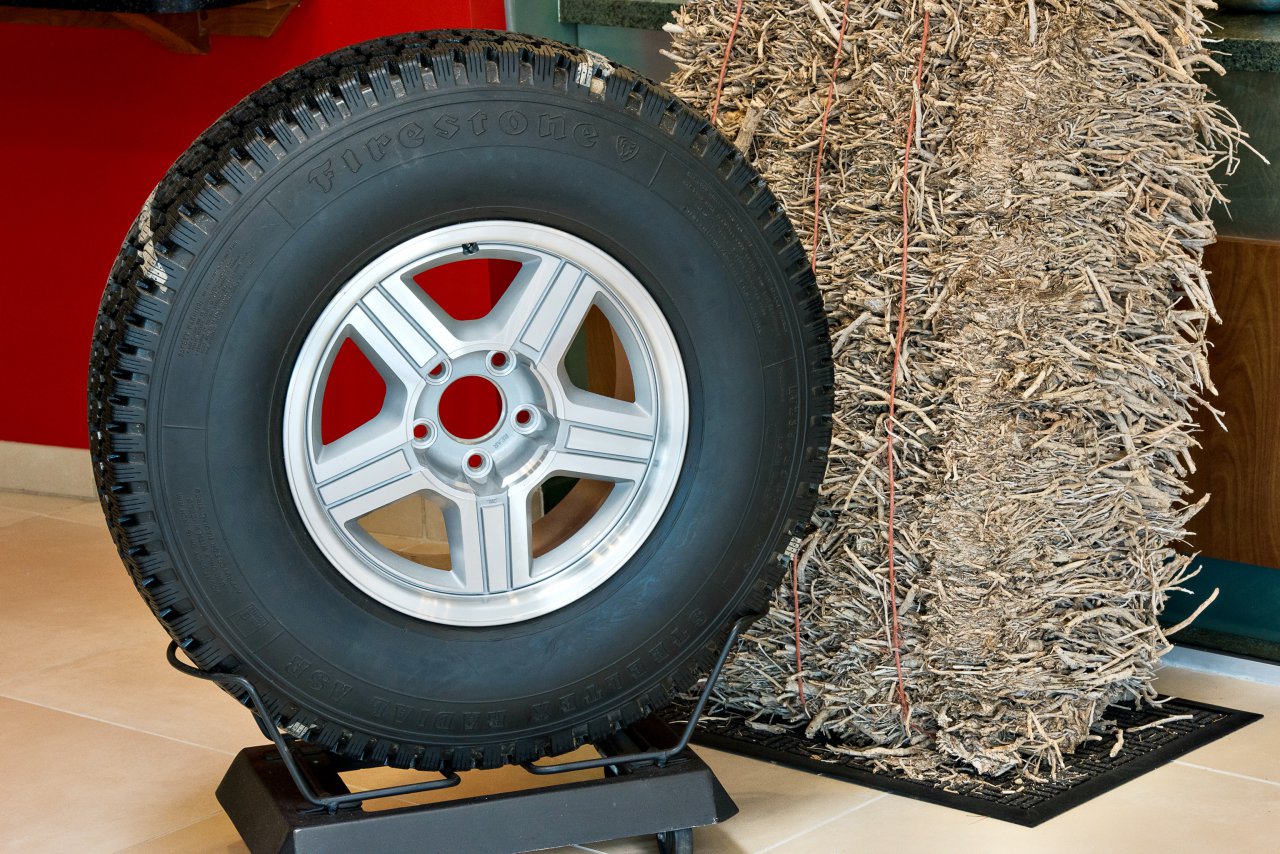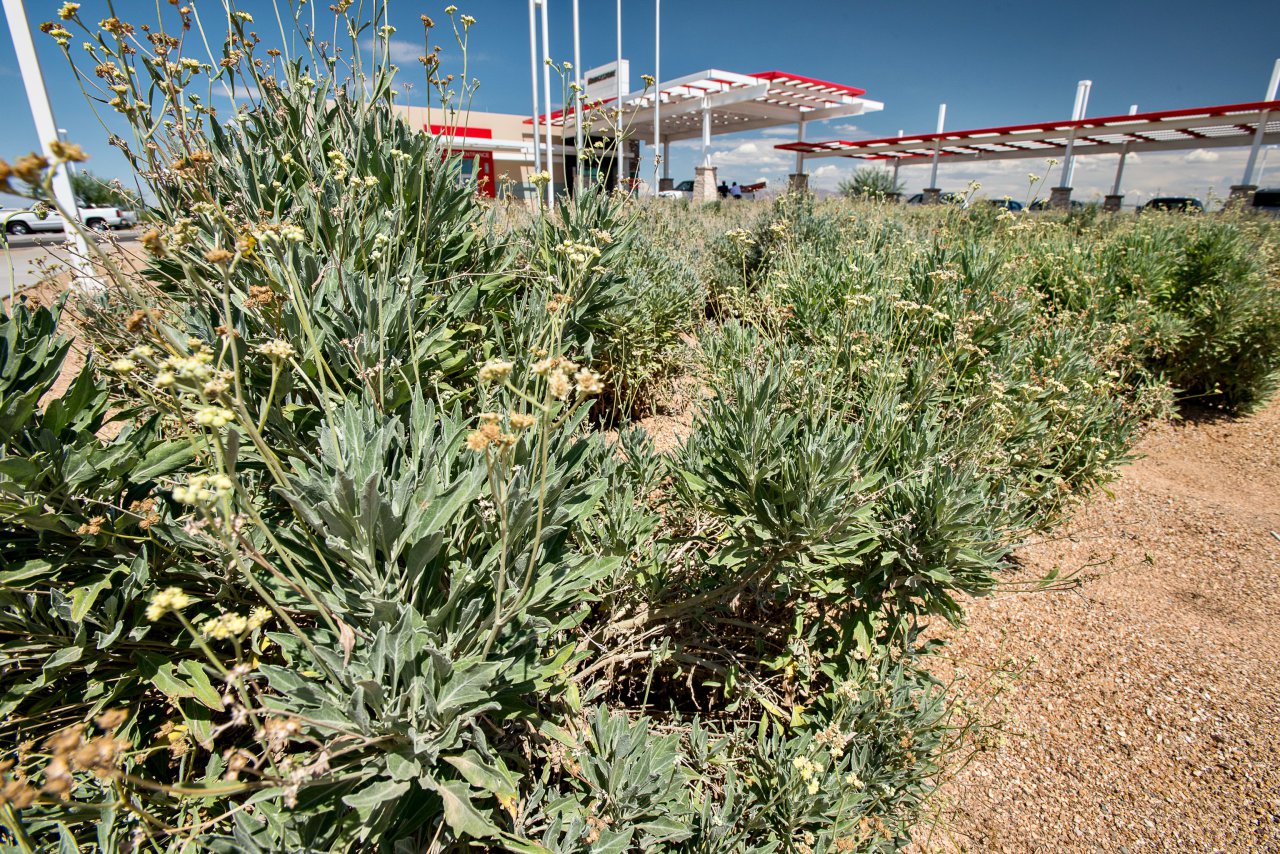Believe it or not, while tires are produced in factories, where some 200 components are mixed and enfolded layered and cooked and molded together, tires actually can be and perhaps should be considered an agricultural product.
Indeed, you can make a very good argument that tires actually grow on trees, since the natural rubber that is one of the main and vital ingredients in the recipes for passenger, truck and aircraft tires is a “white blood” of the Hevea brasilliensis tree, a latex tapped from those trees much like the sap from maple trees that becomes syrup for your breakfast pancakes.
The agricultural aspect of tire production is being explored and emphasized on a “farm” south of Phoenix, where Bridgestone is growing a crop of guayule in hope of finding a viable and American-grown source of natural rubber.
In another story on this website, you can read about the World War II-era development of petroleum-based synthetic rubber because of enemy blockades that halted the flow of natural rubber from trees in Asia, Africa and South America.

Noting that 93 percent of the world’s supply of natural rubber comes from Southeast Asia, that demand from industralizing Asian nations, from blight that infects trees and slows their flow, from the price-volatility of natural rubber, and from potential changes in climate, both in degrees of temperature and in political regimes — could again put imports in jeopardy.
“We have two locations in the Phoenix area,” says William Niaura, a materials scientist with a specialization in polymers who also works as Bridgestone America’s director of sustainable technology. Those sites are the Bridgestone Agro Operations Research Farm at Eloy, Arizona, and the Bridgestone Biorubber Process Research Center in the Phoenix suburb of Mesa.
The farm grows guayule. The research center processes the harvested plants to extract latex and other products.
The program was announced in 2012, ground was broken the and planting began in 2013.

Guayule (pronounced why-u-lee) is a woody desert shrub (parthenium argentatum) native to northern Mexico and parts of what is now the southwestern US, primarily west Texas. As early as pre-Columbian times, latex was extracted from guayule to make balls that bounced and were used in various games, Bridgestone reports.
Seeking a native source of natural rubber even before World War I, the Intercontinental Rubber Company was founded and established guayule farms near Tucson, Arizona; Salinas, California; and in northern Mexico. Interest in the plant resumed during World War II, and again in the 1980s.
One issue, however, was the difficulty of extracting the latex. While it flows — well, actually drips — from Hevea trees, it is trapped inside the cells of the guayule plants, which means harvesting, drying and processing. That is, once the right strain of guayule is determined, in part through DNA studies, and research also has to be done into pesticides and herbicides, as well as establishing relations with neighboring farms to make sure that pests don’t migrate from one field to the next.
Niaura notes that guayule plants are perennials with a 2-year lifecycle. Once that cycle ends, plants are harvested and dried and processed. Only around 5 percent of the plant is natural rubber. But the plants also provide resins and “bagasse,” a woody pulp that can be used to produce ethanol fuel, chemicals and synthetic polymers.
Niaura notes that unlike corn, using guayule for ethanol doesn’t cut into potential corn production for food.
So the biorefinery is much like — and competes with — a petrochemical refinery that starts with crude oil and produces a variety of commercially viable products.
Bridgestone began using natural rubber from guayule in experimental tires in 2015, though for evaluation, not actual production.

“We’ve done multiple iterations for evaluating the rubber products, both in passenger car tires and in truck/bus applications,” Niaura said. “Fundamentally, the metabolism of rubber, whether from trees in Southeast Asia or guayule from Arizona is basically the same. The molecular structure is identical.”
Not only that, but based on production per acre, guayule potentially could produce plus-or-minus 10 percent as much natural rubber as is currently coming from Hevea, Niaura said. Guayule also could be grown not only in the US southwest, but in arid areas of Spain, Italy and much of northern Australia. But future commercialization depends on more than more acreage.
Niaura notes factors, including “the balance of rubber content versus the market value of rubber versus how much revenue non-rubber products are generating,” as factors that contribute to any decision about when commercialization might make sense.
A realistic timetable appears to be the late 2020s.

However, he adds, “if there’s a blight with rubber trees in Southeast Asia, it’s sooner. If we find high-value from the non-rubber products (of guayule), it’s sooner. If we find a ‘super guayule’ with double the rubber content, it’s sooner as well.”
And it is not only guayule that holds promise of providing an alternative to Hevea as a source of natural rubber.
“If you look at the plant world, there are several thousand that make natural rubber as part of their metabolism,” he points out. “But very few (are capable of supplying such material) in industrial relevant qualities.”
One that seems viable is a species of dandelion, taraxacum kok-saghyz or so-called Russian dandelion.
“Russian dandelion is a distant third but worth watching in the long term,” Niaura says, noting that the Continental Tire Company is doing research with TKS in Germany, and, if successful, could be grown in such temperate regions as northern Europe and the Great Lakes area of the United States.

You might ask, however, why all this effort to find other sources of natural rubber when we already can manufacture synthetic rubber?
“Nature is a better chemist than we are,” says Niaura, who uses many polysyllable words and Lego blocks to explain how molecules are connected and how natural rubber reacts to the stress of weight and temperature to actually become stronger and tougher.
While the tire industry currently uses both natural and synthetic rubber in about equal amounts, the more loading a tire is likely to experience the greater the need for more natural rubber. Thus there is more natural rubber in truck tires than in passenger car tires and natural rubber is the primary component in, for example, aircraft tires and in the huge tires used in supersized mining trucks.
With the possible exception of aircraft equipped with pontoons for water take off and landings, with natural rubber, Niaura notes, no airplanes take off or land.





